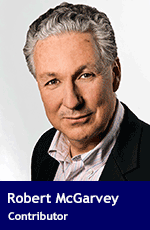 According to a growing army of critics, the mainstream media is unintentionally circulating fake news. Globe and Mail editor Evan Annett believes fake news has become a serious problem. Why? Because it’s “media that’s custom-made to fool you.”
According to a growing army of critics, the mainstream media is unintentionally circulating fake news. Globe and Mail editor Evan Annett believes fake news has become a serious problem. Why? Because it’s “media that’s custom-made to fool you.”
Establishing the truth of a news story is difficult enough, but with the rise of social media, false rumours, stories with incomplete facts, and outright hoaxes spread with extraordinary rapidity to large populations.
While many activists design fake news for political gain, profit or to garner attention, few realize the extent to which the financial establishment uses fake news – custom-made media presented by authoritative sources – to fool the public. Moreover, this kind of fake news is repeated so often that these falsehoods become established ‘truth’.
Consider the banking story presented by a major news organization’s national business editor the other day explaining why interest rates were on the way up for Canadians.
| RELATED CONTENT |
| CBC trying to shake free of its mandate as a public broadcaster By Peter Menzies |
| CBC has outlived its usefulness By Joseph Quesnel |
| Patrick Watson was a true giant of Canadian broadcasting By Michael Taube |
Mortgage rates, it seems, must rise in the wake of the Bank of Canada’s raising nominal interest rates (the rates the Bank charges commercial banks to borrow reserve funds).
Why must rates rise? It was explained by the business editor that raising nominal rates will obviously push up rates in the commercial bond market, and since banks obtain the funds they lend to consumers from the bond market, they will naturally have to pass on these costs in higher mortgage rates.
Perfectly logical argument, yes, but it is also fake news; that is, a custom-made story designed to fool the public.
There’s just enough fact in this story to conceal the truth. Yes, the Bank of Canada did raise nominal rates, and yes, these rising rates will impact the bond market. It’s also true that commercial banks will often access bond markets for capital of various kinds, including strengthening their reserve base.
But that’s where the truth ends and the fake news begins.
No, banks are not financial intermediaries; they do not borrow existing funds from the bond market for lending purposes. They create their credit base, the money they lend consumers to buy houses, automobiles etc., internally on a fractional reserve basis.
How does fractional reserve work?
Well, a bank literally creates its loanable funds out of thin air through a multiplier effect. In practice, banks leverage their reserve base, the bank’s foundational equity including its deposits, to create a credit facility that is orders of magnitude larger that its reserve base.
The truth is, banks don’t lend Canadians pre-existing money (which they must pay interest on). The funds that land in your bank account to buy your house or car are created on the spot as new money, simply through a bank accounting entry (in reality, a few strokes on the keyboard).
Interest rates are not set in the bond market; banks set mortgage rates at whatever the market will bear. In other words, the banking truth is much more complicated than the business editor is presenting – and yes, it’s misleading and what some would call fake news.
Are there other instances of establishment fake news? Regrettably, yes.
The public is repeatedly told in the business press that professional wealth managers serve the interests of investors, pensioners and other parties hoping to optimize their savings through personalized investment strategies.
The reality is quite different. According to Paul Smith, chief executive of the U.S.-based CFA Institute, the financial services industry is simply “driving fees” and he appealed to the industry leader to “make the system work – for everyone, not just for ourselves.”
Where is the fake investment news in mainstream media bias? It’s everywhere.
The establishment has an overwhelming need to keep the financial status quo in place; that means maintaining an ever-rising stock market and a continuous channeling of the nation’s saving into the market through the financial services industry.
Regrettably, placing money in the stock market is not real investing. Almost none of the $70 trillion dollars that circulates in global stock markets is employed to build new products, hire staff or grow businesses – it’s parked on the sidelines, servicing no useful purpose except to grow (pyramid-like) as more and more investors plow their savings into the market month after month.
Fake news spreads rapidly through our society today because we’ve become normalized to it through the conventional mainstream media. So it appears Evan Annett is right: we’d better wake up to the dangers of fake news – all of it – before it’s too late.
Robert McGarvey is an economic historian and former managing director of Merlin Consulting, a London, U.K.-based consulting firm. Robert’s most recent book is Futuromics: A Guide to Thriving in Capitalism’s Third Wave.
For interview requests, click here.
The opinions expressed by our columnists and contributors are theirs alone and do not inherently or expressly reflect the views of our publication.
© Troy Media
Troy Media is an editorial content provider to media outlets and its own hosted community news outlets across Canada.

